Abstract
Dimensional changes during gravitropic bending of cocklebur (Xanthium strumarium L.) dicot stems were measured using techniques of stereo photogrammetry. The differential growth is from an increased growth rate on the bottom of the stem and a stopping or contraction of the top.
Contraction of the top was especially evident upon release and immediate bending of horizontal stems that had been restrained between stiff wires for 36 hours. The energy for this could have been stored in both the top and bottom, since the bottom elongated, and the top contracted.
Forces developed during bending were measured by fastening a stem tip to the end of a bar with attached strain gauges and recording electrical output from the strain gauges. Restrained mature cocklebur stems continued to accumulate potential energy for bending for about 120 hours, after which the recorded force reached a maximum.
Pressures within castor bean (Ricinus communis L.) stems were also measured with 3.5-millimeter diameter pressure transducers. As expected, the pressure on the bottom of the restrained plants increased with time; pressures decreased in vertical controls, tops of restrained stems, and bottoms of free-bending stems. Pressures increased in tops of free-bending stems. When restrained plants were released, pressure on the bottom decreased and pressure on the top increased. Results suggest a possible role for cell contraction in the top of stems bending upward in response to gravity.
Full text
PDF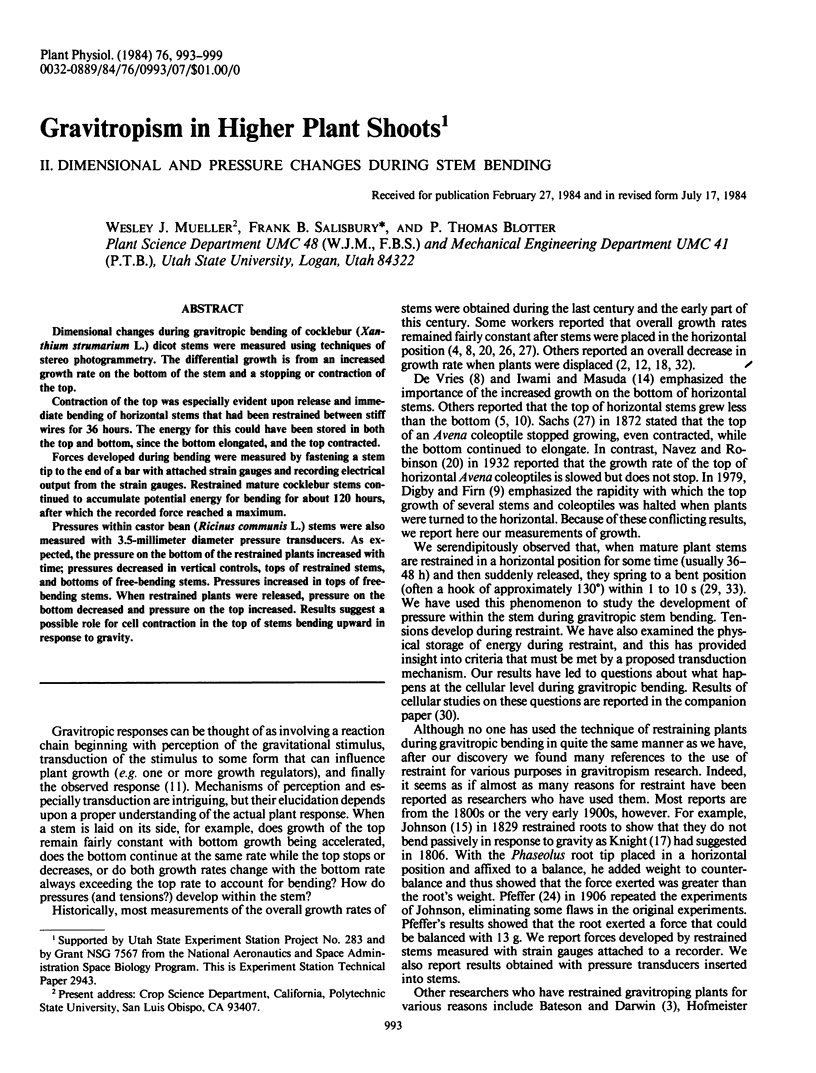
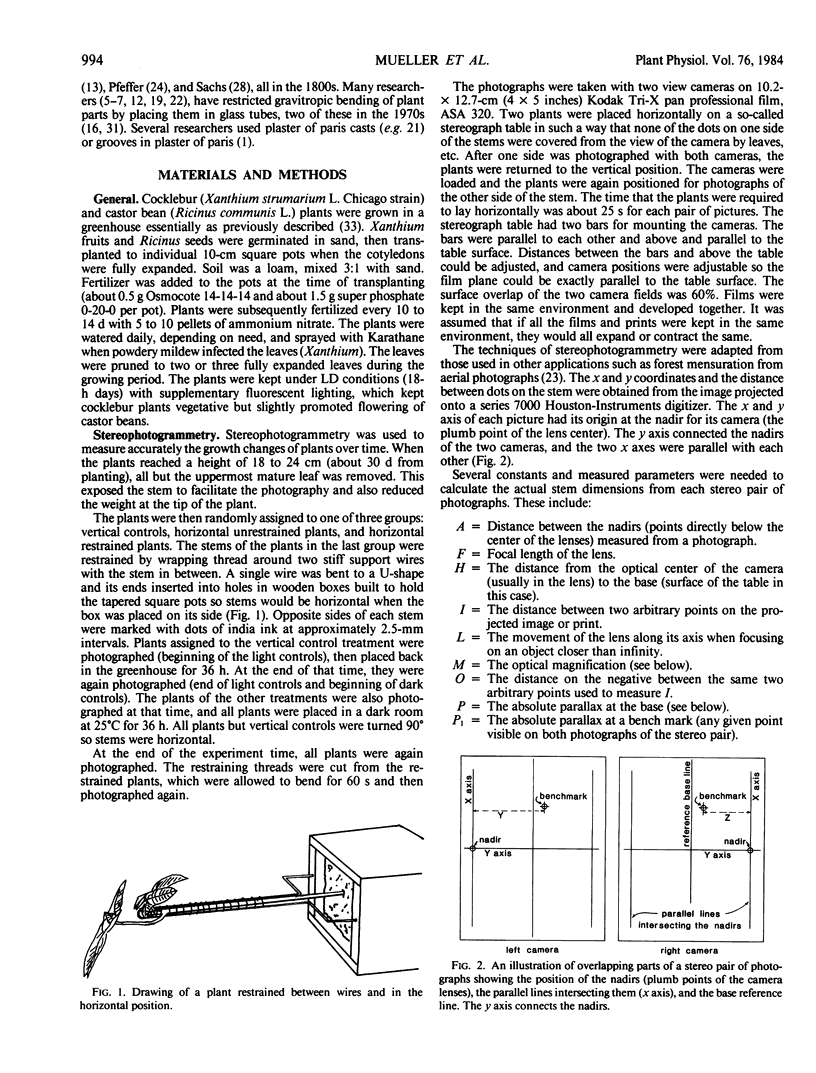

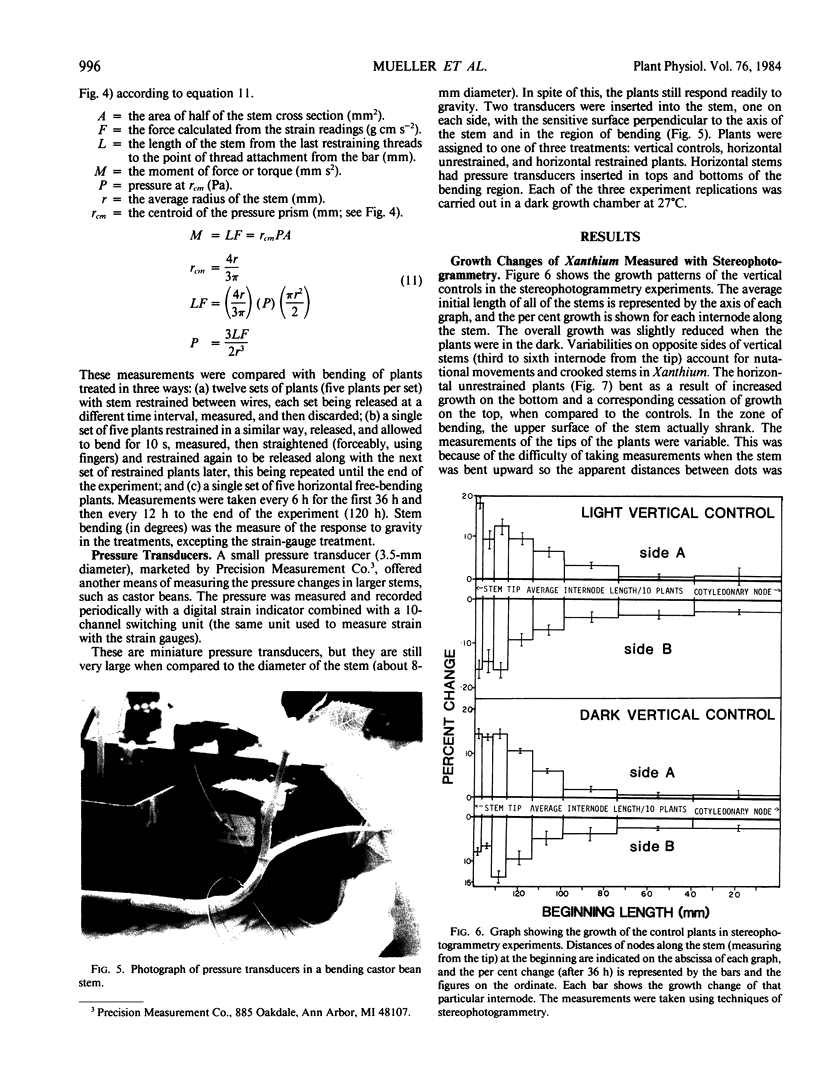
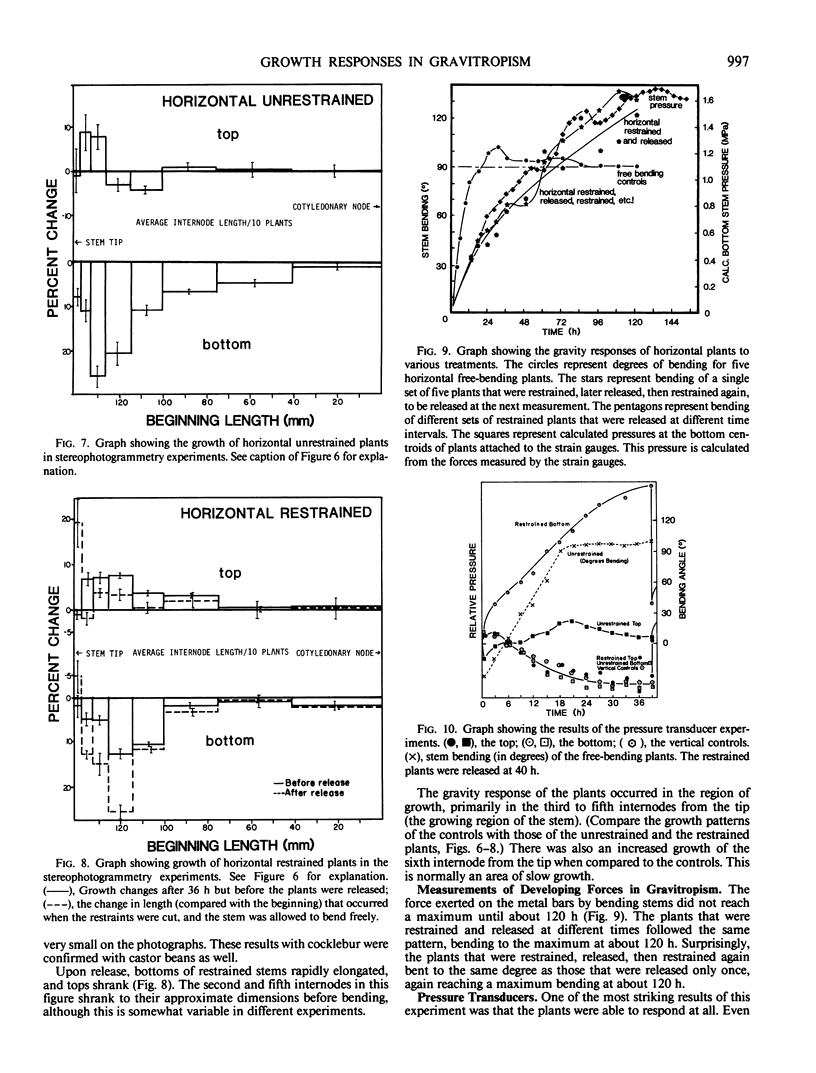
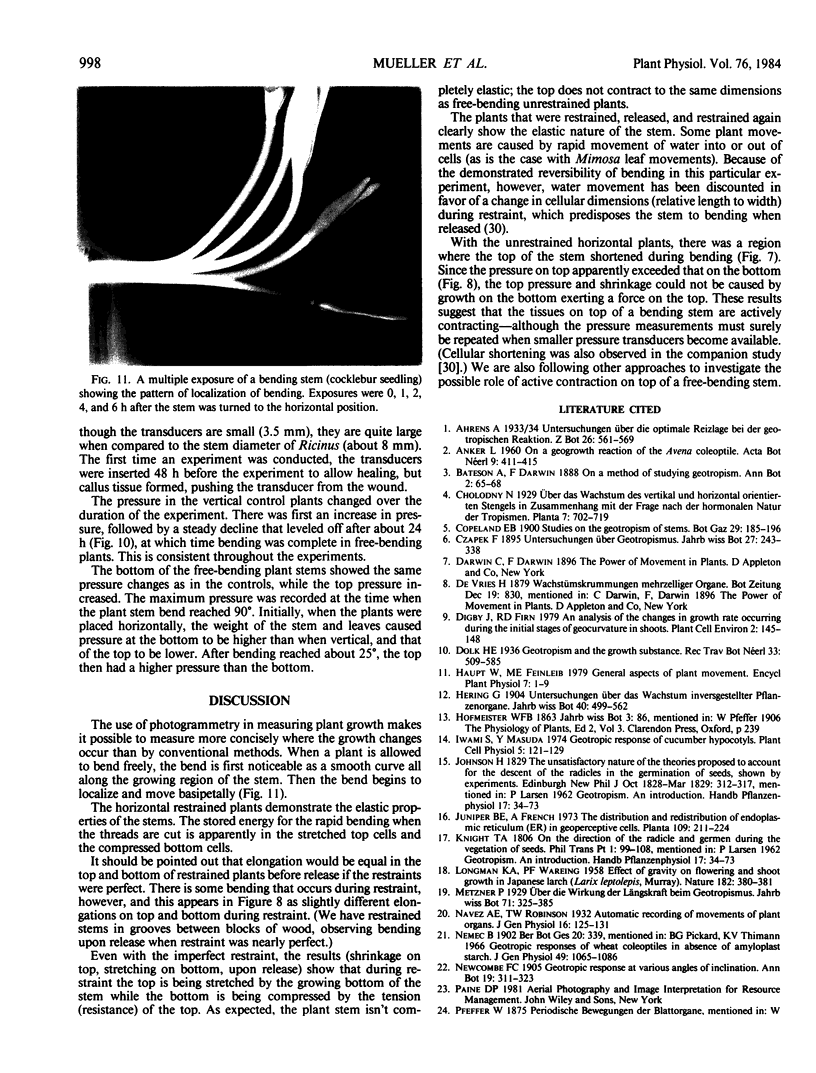

Images in this article
Selected References
These references are in PubMed. This may not be the complete list of references from this article.
- Pickard B. G., Thimann K. V. Geotropic response of wheat coleoptiles in absence of amyloplast starch. J Gen Physiol. 1966 May;49(5):1065–1086. doi: 10.1085/jgp.49.5.1065. [DOI] [PMC free article] [PubMed] [Google Scholar]
- Wheeler R. M., Salisbury F. B. Gravitropism in Higher Plant Shoots: I. A ROLE FOR ETHYLENE. Plant Physiol. 1981 Apr;67(4):686–690. doi: 10.1104/pp.67.4.686. [DOI] [PMC free article] [PubMed] [Google Scholar]




